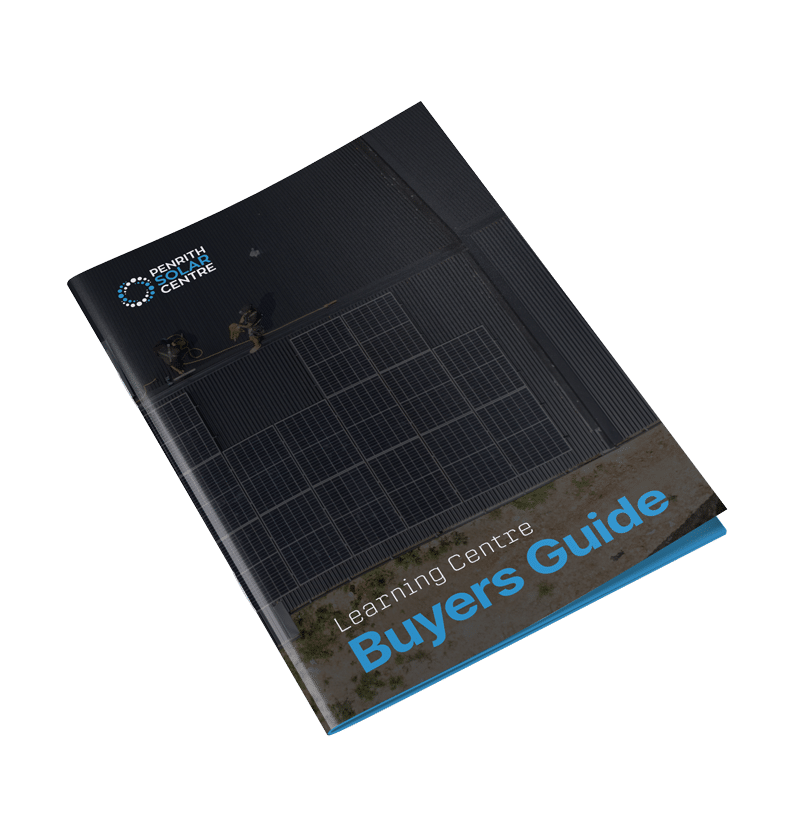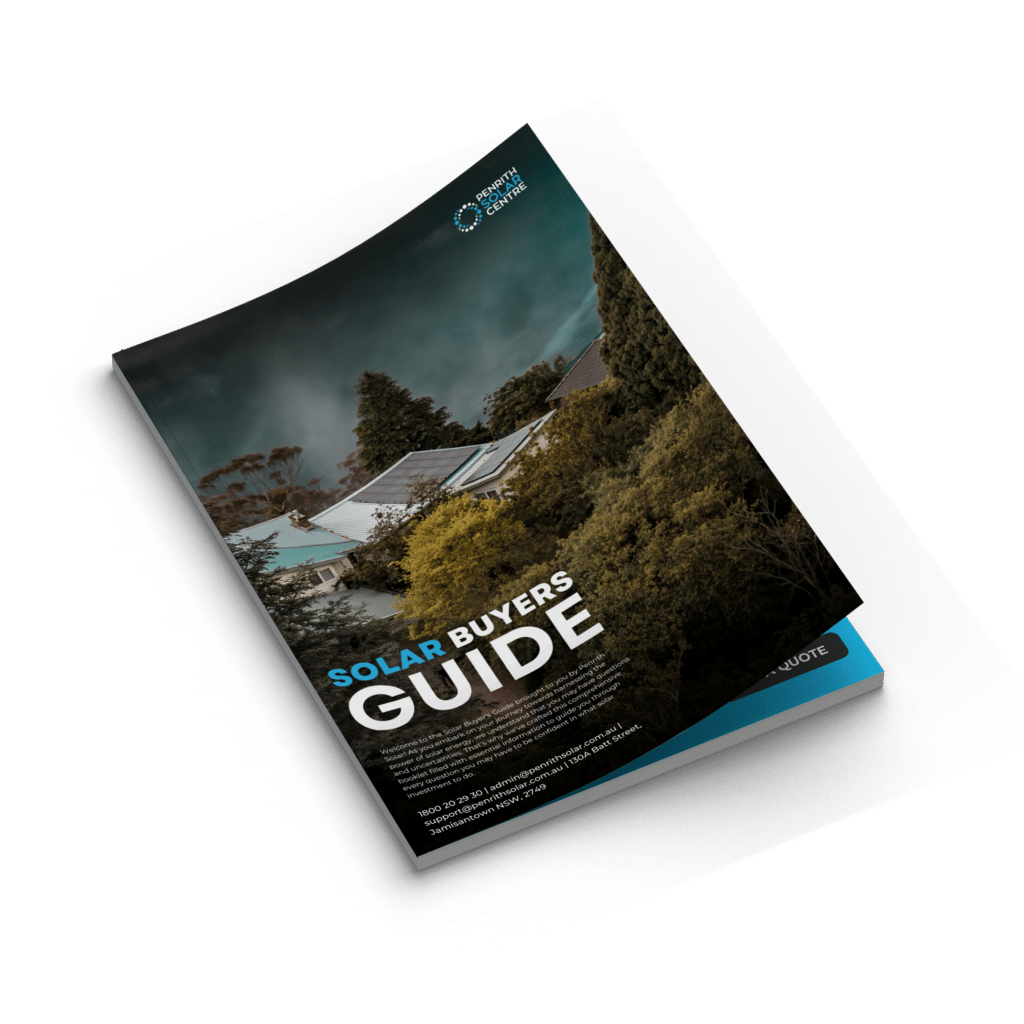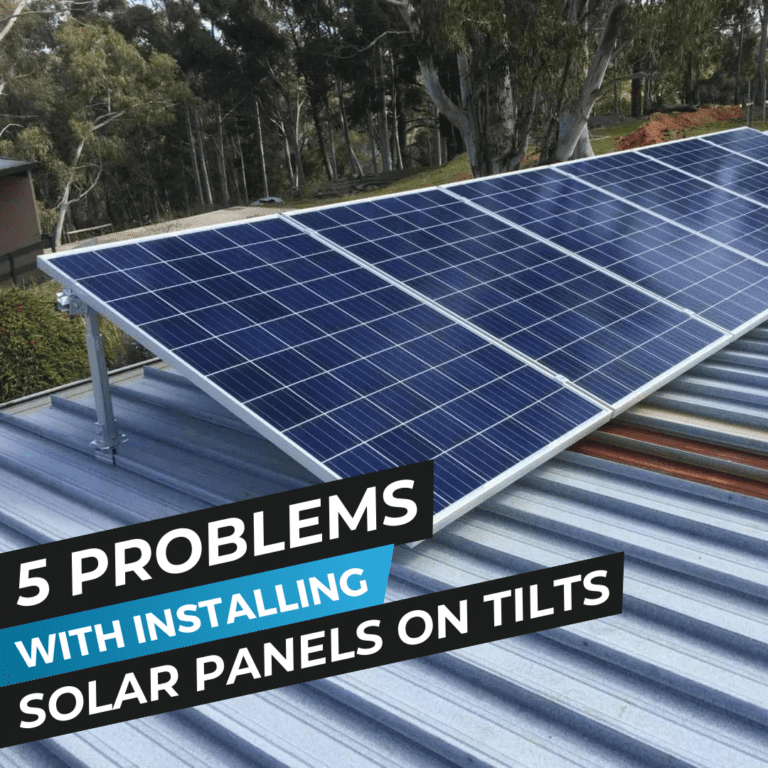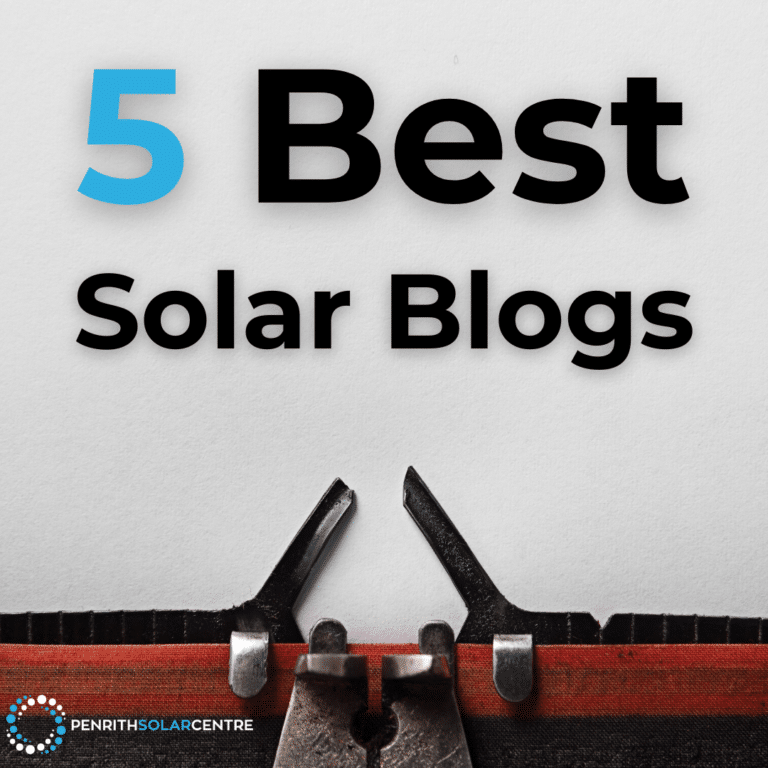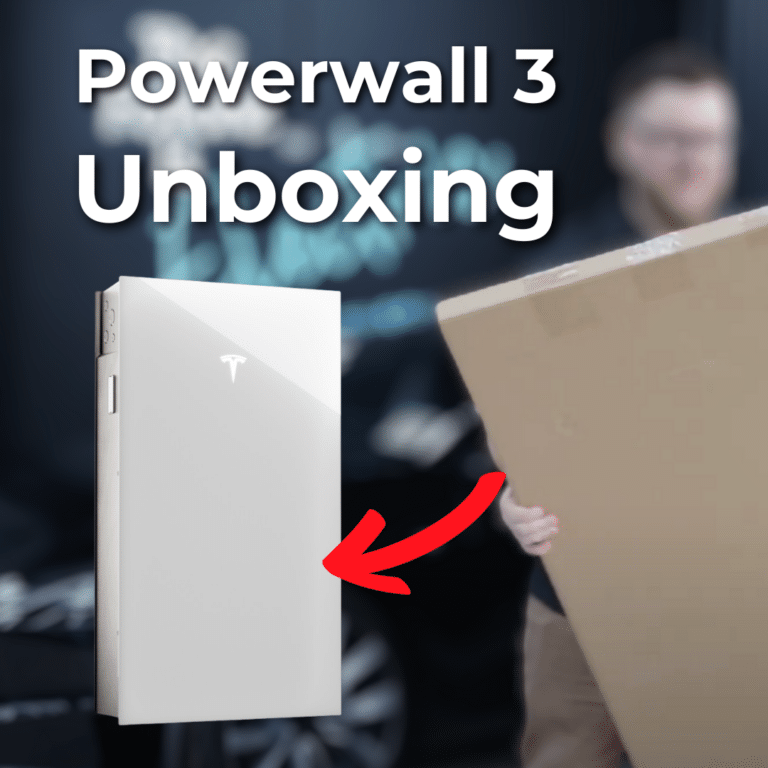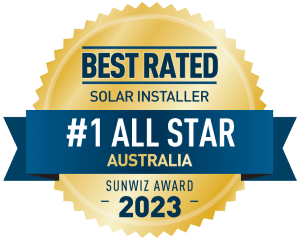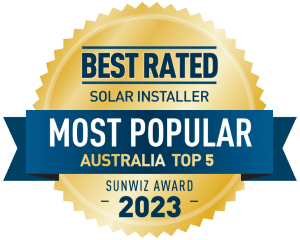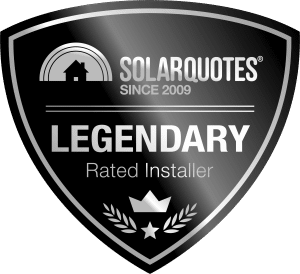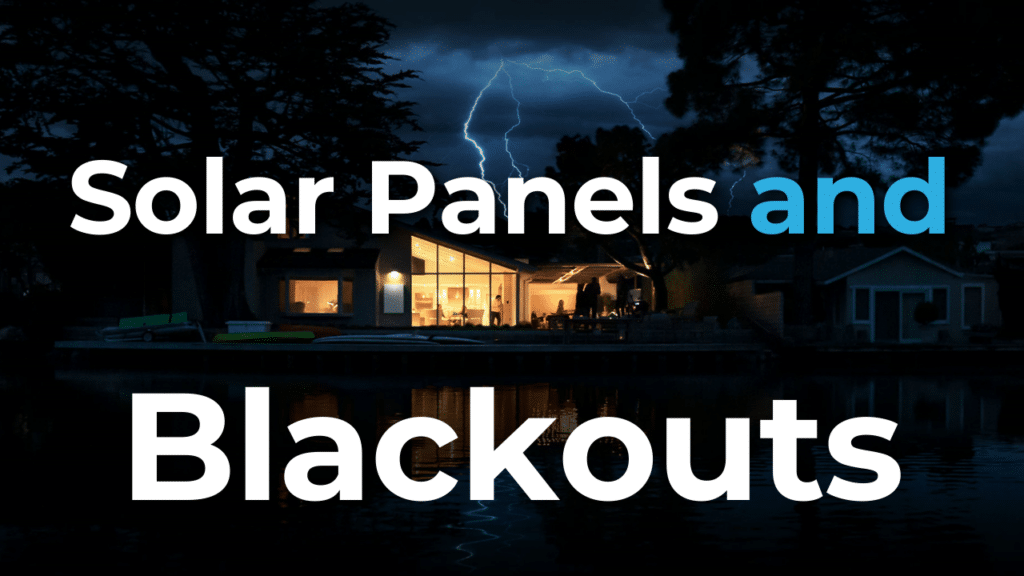
When the power goes out, most people assume their solar panels will keep the lights on. After all, they’re producing energy, right? Unfortunately, that’s not always the case.
Without the right setup, some solar systems shut down during a blackout, leaving homeowners without power when they need it most. This catches many by surprise. It leads to frustration and unanswered questions about their solar investment.
At Penrith Solar Centre, we help you take control of your energy needs – even during blackouts. We have years of experience installing and configuring systems like Enphase microinverters and Tesla Powerwall batteries. We understand how to design setups that keep your home powered and protected in a blackout.
In this article, you’ll learn about the following:
- AC vs. DC Coupled Systems: Which is Better for Blackouts?
- Challenges of Three-Phase Backup in a Blackout
- How to Prepare for Blackouts
By the end, you’ll have a clear path to keep your home running when the power goes out.
AC vs. DC Coupled Systems: Which is Better for Blackouts?
When it comes to powering your home during a blackout, the type of system you have matters.
AC-coupled Systems:
AC-coupled systems, which are common in Australia, can work well but have limitations.
In an AC-coupled system, solar panels generate direct current (DC) electricity, which is converted into alternating current (AC) by a solar inverter (or microinverter) for use in your home or to export to the grid.
During a blackout, inverters (or microinverters) are programmed to shut down. This prevents feeding electricity into a de-energised grid. It’s a safety feature.
This shutdown means that your solar panels cannot supply power during an outage. You’ll need additional equipment like a battery.
Enphase offers an impressive solution for blackout protection called Black Start. Their IQ8HC series microinverters, paired with the Enphase IQ Battery 5P home battery, make this feature possible.
This unique capability enables your system to power up seamlessly every day, even if the batteries run flat overnight. With Enphase systems, homeowners on a single-phase setup can back up almost all their panels and power their homes. It’s a seamless, reliable, and powerful solution.
For an AC-coupled system, we’re able to keep on a portion of your panels 99% of the time. Sometimes, that 1% of the time, there might be solar design problems. Situations where your battery is installed on a different building from your panels is a common backup design problem.
Our electricians will do everything they can to keep your panels on during a blackout.
DC-coupled Systems:
In contrast, DC-coupled solutions like Tesla’s Powerwall 3 are designed to maintain power during outages more effectively. A Powerwall system keeps your panels running, even in a blackout.
A Powerwall system features direct input into the battery from the solar panels. The panels will keep charging the battery during a blackout because they’re directly connected to the battery. They can keep supplying the battery as long as sunlight is available.
In the event of a blackout, there’s an automatic transfer that happens. Powerwall disconnects from the grid. This allows your stored energy to power your home without feeding electricity back to the grid.
One of the key benefits of the Tesla Powerwall 3 is its ability to create a self-sustaining ecosystem. If the battery drains overnight, the solar panels will kick-start the battery management system in the morning. This recharges the battery and gets the system back online without any external input.
This setup provides the closest experience to living off-grid, even during prolonged outages. It’s able to do this by design.
If you’re interested in learning about types of solar batteries, you might want to check out the following article titled, AC-coupled Battery vs. DC-coupled Solar Batteries.
Challenges of Three-Phase Backup in a Blackout
Backing up a three-phase home comes with its own set of challenges. Both Tesla and Enphase systems have limitations on three-phase homes.
For three-phase setups, these systems can typically only back up one-third of your panels. This is because your solar will be split evenly across all three phases.
For example, if you have a 21kW solar system, you may only be able to keep about 7kW online during a blackout.
For single-phase systems, however, it’s often possible to maintain your solar production. Even if you had 10kW of solar panels, we’re able to keep them on, charging your batteries and supplying the home with energy. Everything is on one phase and you’re only backing up one phase.
Three-phase systems require synchronous backup across all three phases. This is different from single-phase systems, which can support the entire home.
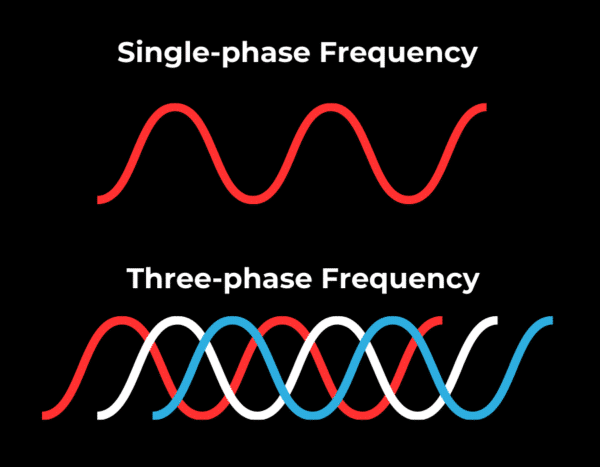
Understanding Three-Phase Synchronous Systems
The “synchronous” part means that all three phases stay perfectly aligned. They use three separate phases of alternating current (AC), each offset by 120 degrees.
Maintaining that 120-degree separation is really important for equipment that relies on smooth, steady movement. Motors need this. Any misalignment can cause them to overheat or stop working altogether.
Three-phase systems are a common setup for larger homes and some businesses. Their staggered setup creates a steady, reliable flow of power. This is perfect for running things like motors, air conditioning systems, and heavy machinery that need consistent energy.
These systems are efficient and reliable, but they’re also more complex than single-phase setups. If you’re planning a solar or battery system for a three-phase home or building, talk to an expert. A good sales consultant should be able to walk you through this.
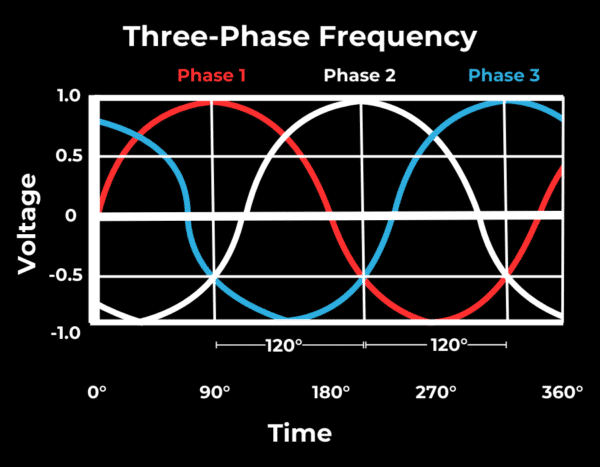
Some hybrid inverters can keep panels running and charging batteries during the day.
However, these solutions typically provide partial backup rather than full system functionality. This is a key consideration for homeowners with larger solar systems or specific power needs during blackouts.
String Inverters and Their Limitations
If your solar system uses a string inverter, your options for blackout protection are more limited.
Single-phase string inverters can work with batteries like the Tesla Powerwall 3. Powerwall tricks the hybrid inverter into thinking the grid is still online. This allows the panels to keep generating energy during an outage.
However, for three-phase string inverters, this isn’t possible. The technology simply isn’t designed to support any portion of the panels during a blackout.
Hybrid inverters with DC-coupled batteries are often a better choice for homeowners looking for more flexibility. These systems can keep at least some panels running during a power outage, offering greater peace of mind and functionality.
If you’re interested in learning a bit more about installing a single-phase battery like the Powerwall 3 on a three-phase site, you might want to check out the following article titled, Can I Install a Single-Phase Battery on a Three-Phase Home?
Ready to go solar? Click here.
How to Prepare for Blackouts
When planning your solar and battery setup, it’s crucial to think about your priorities during a blackout.
- Which appliances are essential for you and your family?
- Do you need to keep your fridge running, stay connected to the internet, or have reliable lighting?
For many, a combination of these is vital.
Single-phase homes have more straightforward options for backup power. They often support all the home’s energy needs.
For three-phase homes, careful planning is necessary to ensure critical appliances and systems remain powered. Discussing your priorities with a solar expert can help tailor your system to meet your specific needs.
If you’d like to learn more about blackout protection, we recommend you check out the following article titled, Tesla Powerwall 3 Review: An In-Depth Look at Tesla’s New Solar Battery.
Rays and Shine During Blackouts with Enphase and Powerwall
Will your solar panels work during a blackout? The answer depends on the type of system you have and how it’s configured. AC-coupled systems can often keep some panels running, while DC-coupled setups like the Tesla Powerwall 3 offer better blackout performance.
Enphase’s Black Start technology provides another excellent option for seamless backup power, particularly for single-phase homes. For three-phase homes, achieving full backup remains a challenge, but solutions exist to keep critical systems powered.
The key is to work with a knowledgeable installer, like Penrith Solar Centre, who can design a system that meets your needs, whether it’s full home backup or partial power during outages. By understanding your options and investing in the right technology, you can ensure your home stays powered, no matter what happens to the grid.
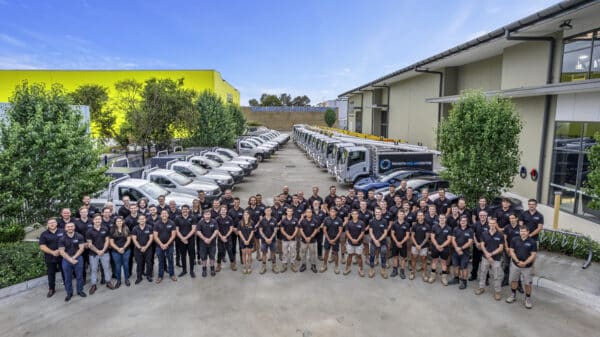
If you’re interested in learning a bit more about the battery market, you might want to check out the following article titled, Best Home Solar Batteries for 2025.
